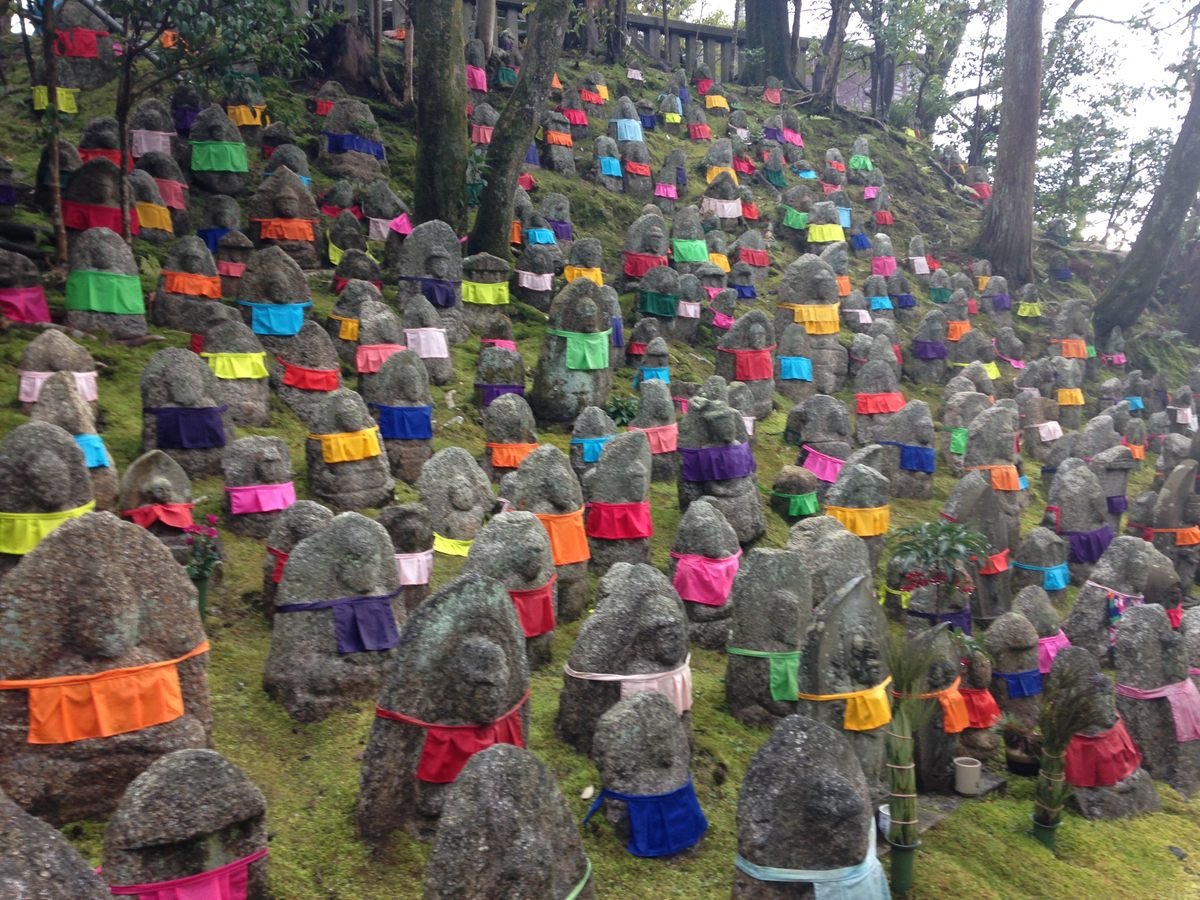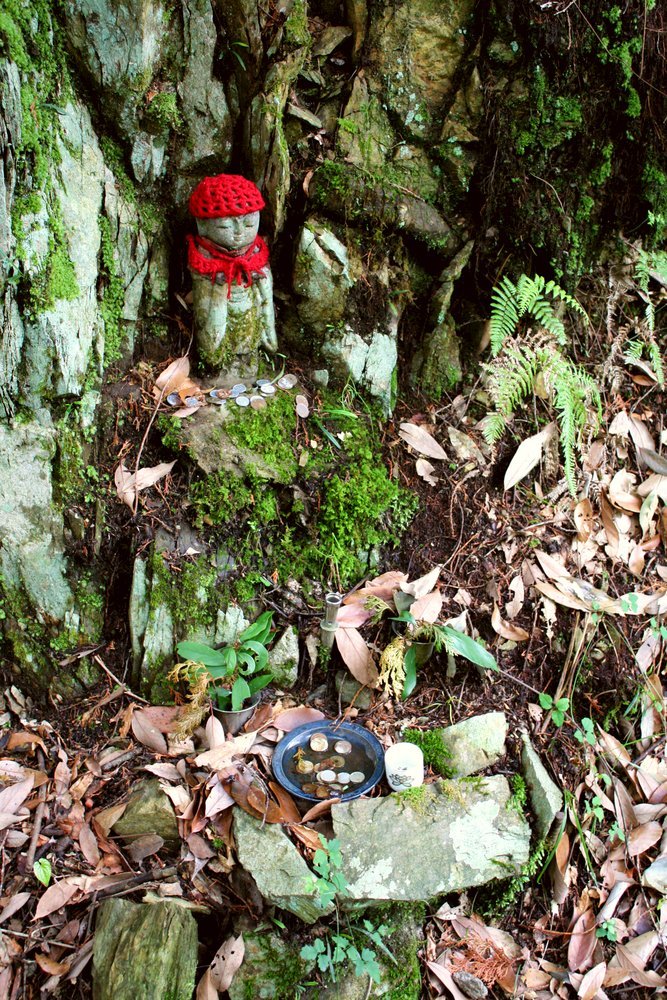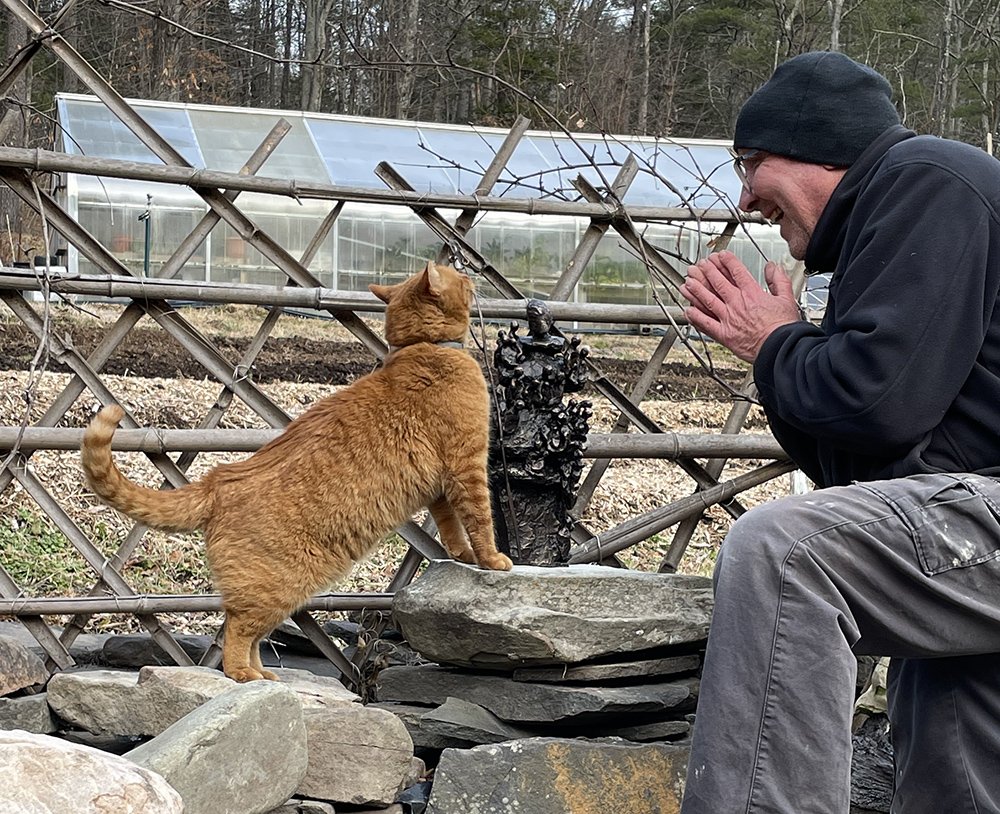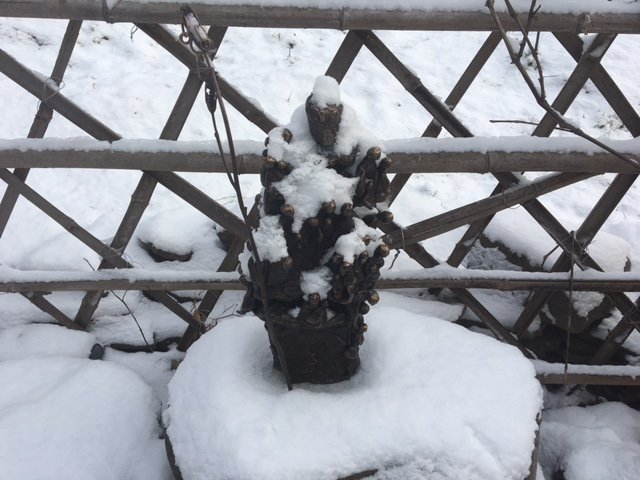Ancient people made stone piles to mark a site as sacred, while today we use stone cairns to indicate the direction on a wilderness trail. For over a year I had a small pile of stones on one of my work tables. It just sat there and didn’t draw attention from visitors to the studio. It didn’t point me in any direction.
When I begin a sculpture, I sometimes don’t know where I’m going. I will let something sit for a long time. I know there is a seed there, but it is buried in the earth. It’s as if my life, the practical everyday side, needs to catch up to the trusting, mystical side. My cairn waited, occasionally toppling to the floor.
Then I was asked if I could make a Jizo for the garden at Zen Mountain Monastery. Jizos are protectors. In Japan, even today, they are along roadsides, on city street corners, in temples and shrines. These stone figures are particularly important for the protection they offer to women, children, and travelers. A wood roughly carved Jizo sculpture had been in the garden at the monastery, but when the Jizo House was completed, a small building designed to house monastery retreatants, this wooden Jizo moved to the front door of the Jizo House to be a welcoming presence.
Jizo first appeared in Buddhist iconography in the 7th century in China as a male monk with robes and a staff that had rings on the top that jingled when he walked.
Jizo Bosatsu by Zen-en (14th century) Collection Asia Society
The jingle-jangle would scare away predators as well as warn away small animals that might get stepped on. But Jizo as it came down the centuries became more often represented by rough stone carvings. Red bibs were often tied around them as prayers for a deceased child, and women would knit little caps for them, too. I remember visiting a temple in Kyoto where there was a venerable sea of Jizos. It was a temple where women came to offer their tears for a stillborn or aborted child.
Jizos at Kiyomizudera Temple in Kyoto. Photo: https://www.atlasobscura.com/places/kiyomizudera-temple
Sometime during Jizo’s history, they became associated with the earth. The English translation of the word is “earth storehouse” or “earth womb.”
Forest Jizo, Photo credit: https://www.okujapan.com/blog/japanese-jizo-statues
When Yukon, the monk who is the gardener at the monastery asked me make a Jizo, I immediately said yes. That’s when I began to hear this small collection of stones on my table speak. Earth mother, protector, guardian. Jizo traditionally was male, but became non-binary. Jizo simply cares. Working on the sculpture, I began to think of all the beings Jizo cares for, and I placed them all over their body.
Jizo in Wax with Iris Stem
Yukon had made it very clear that this Jizo needed a staff, and it had to be one like the traditional Jizo with rings. I picked out a couple of stalks from the dried iris clump near my studio door. They were the right size and I liked the idea of using the dried seed pod for attaching the rings. Zach Gabbard at Mission Foundry did a masterful job casting, welding, and burning out the iris pods to make the staff.
Jizo installed at Zen Mountain Monastery Garden, 2022, bronze
Jizo Staff in Snow (detail), Photo: Mn.Yukon Grody
A Jizo’s vow ensures that they will help all beings no matter what misdeeds have caused their suffering. Makers of Jizos, as well as those who venerate them are said to receive gifts. How grateful I am for the opportunity to make this sculpture and install it in the garden at Zen Mountain Monastery. May this Jizo be a protector for the earth’s beings everywhere.
Rudy the Cat, Jizo, and Yukon
We can all make Jizos. Build stone cairns, or bake a stack of cookies for a friend. Offer flowers, smiles. Spread the care, extend the love. I’d love to offer a Jizo making workshop when we can all meet again in person. Let me know if this interests you.
Jizo in the Snow, Photo: Mn.Yukon Grody







